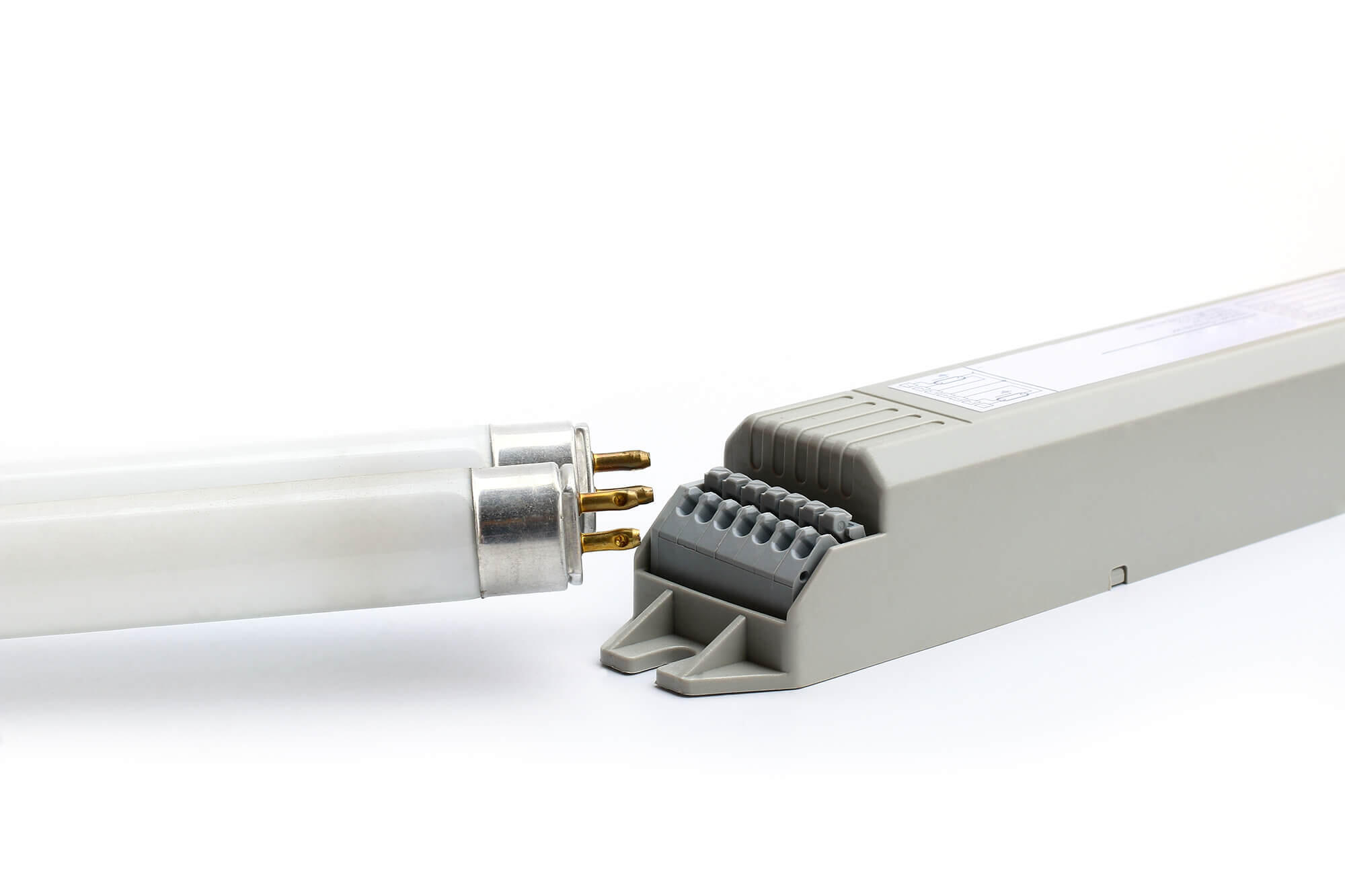
THE PRODUCT:
Fluorescent lamp ballasts are used to start and operate fluorescent lamps by providing the high voltage required to start the lamps and then limiting the current to a safe level. Fluorescent ballasts are also distinguished by their starting method: instant start (IS), rapid start (RS), and programmed start (PS).
THE STANDARD:
The current standards for fluorescent lamp ballasts took effect in 2014. The standards apply to ballasts that operate different types of 2-, 4-, and 8-foot fluorescent lamps. The standards, expressed as minimum ballast luminous efficiency (BLE) levels, range between 0.841 and 0.918, depending on the product class.
In 2020, DOE issued a final determination not to amend standards for fluorescent lamp ballasts. DOE initiated a rulemaking in 2023 to consider amended standards for fluorescent lamp ballasts.
*The energy efficiency metric is BLE, which is the total fluorescent lamp arc power divided by the ballast input power (unitless).
KEY FACTS:
IS ballasts are inherently more efficient than RS and PS ballasts because they rely on a very high initial voltage to initiate the arc rather than electrode heating. However, IS ballasts can result in a significant reduction in lamp lifetime if they are used with occupancy sensors and are frequently switched on and off. PS ballasts, which are advanced versions of RS ballasts, can significantly increase lamp lifetime in occupancy sensor applications.
In commercial and industrial buildings, the most common fixture in the market is four feet long. Technology options for improving the efficiency of fluorescent lamp ballasts include improved components (transistors, diodes, and capacitors) and improved circuit design.
Fact Sheets
Timeline
| Federal | Date |
| Next Review Due | 2023 |
| Final Negative Determination Issued | 2020 |
| 3rd Federal Standard Effective | 2014 |
| 3rd Federal Standard Adopted | 2011 |
| 2nd Federal Standard Effective | 2005 |
| 2nd Federal Standard Adopted | 2000 |
| 1st Federal Standard Effective | 1990 |
| 1st Federal Standard Adopted | 1988 |
| NAECA 1988 Initial Federal Legislation Enacted | 1988 |